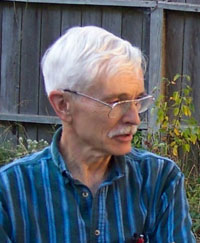Adventures in Bookland

In recent years I have gained a working knowledge of libraries at Yale, Wesleyan, and Trinity College to say nothing of the Connecticut State Library. I didn’t use breadcrumbs to learn my way in and out but they might have been useful. More than once, I took a wrong turn in the Sterling Memorial Library at Yale and had to work my way back up staircases on which the door at the bottom was locked or ask a security guard to tell me where I was and how to get out of it. Libraries are like that; they are designed to keep books in but not necessarily to enable you to find them. Yale uses two indexing systems and shelves books with almost identical call numbers in two totally different places: some are on the fourth floor of Sterling and others in the Bass Library, under the courtyard in front of Sterling. I have mastered all these intricacies.
Until yesterday, however, in spite of one or two visits, I had no similar working knowledge of the New York Public Library, whose website catalog, by the way, is CATNYP. Yesterday I was given an unplanned tour of the facility.
My project was to find city directories from the mid-19th century. I had looked them up online and knew they were there. I had a reference number which began, mysteriously, with the word “Stuart.” I went in the front door of the library, a building which resembles an Egyptian mausoleum complete with sphinx-oid lions crouched on the front steps. The entrance hall alone, a great echoing marble sarcophagus, is large enough for most libraries. To the left was a booth marked “Information” but it was un-staffed. The brochures provided said nothing about reference numbers and no staff person emerged. Finally I went back to the door and asked the guard, whose first language was apparently not English. Finally he was able to communicate his belief that I should go to the opposite side of the entrance hall and ask someone at a booth labeled “Friends of the Library. The elderly “friends” on duty there told me they were not librarians so I should go to the third floor and ask a librarian. They told me where I could find stairs to the third floor or an elevator. I have been in the New York Public Library often enough to know that stairs to the third floor are not a good option, so I found the elevator and ascended.
Arriving at the third floor I found a librarian and showed her the printout of the reference number for which I was looking. “Oh,” she said, “you need to go to room 101 on the first floor.” On my way back down, I counted the steps from floor two to floor one: there were 45. This building was not designed for people who have lost their agility. Room 101 is at the south end of the first floor and the library occupies one city block. In room 101, I found a librarian who told me I really needed room 119 at the north end of the floor.
So I hiked back to the north end (only a short distance from the Friends of the Library booth where I had started) and, sure enough, there was a librarian on duty who knew exactly what I wanted and where it was and got it out for me immediately. I spent a happy hour studying microfilm of 19th-century street directories and came away much enlightened not only about where James Pennington lived in the years between 1850 and 1867 but about some of the various ups and downs and abouts of the New York Public Library.

 Christopher L. Webber
Christopher L. Webber